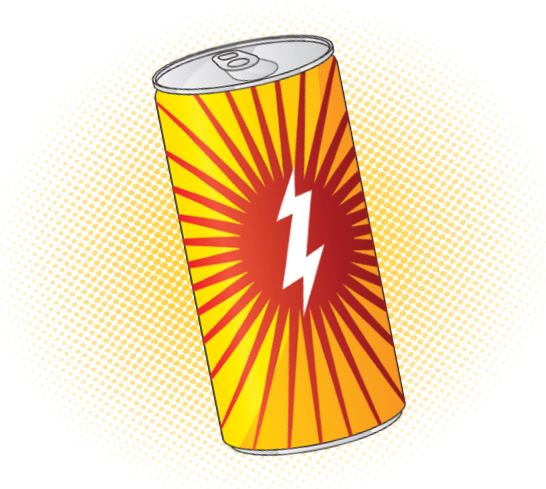
Too Sick to Work?

CORE HEALTH
Too Sick to Work?
By Erin O’Brien
The average U.S. employee takes 5.8 sick days per year, a number that probably seems too high to employers but pretty low to employees. There is a quiet battle between the two parties about the subject of ill time and this raises the question, how sick is “too sick” to work?
Colds and the flu are two of the main reasons for employees missing work, although other related illnesses and conditions can account for missed days. For the most part, a mild cold or minor allergy symptoms do not require complete rest, and the employee does not need to stay home. The important thing for employees to remember is that if, by going to work, the employee could make their condition worse, fail to do their job effectively, or risk infecting coworkers, staying home for a day or two is the best course of action. If an employee is feeling very sick, they are likely to have a hard time functioning and performing at their normal level. Also, trying to “push through” or “tough out” an illness can actually make a condition worse and prolong the amount of time the employee is sick. Going to work while contagious also increases the risk of infecting coworkers. If an employee is so sick that a doctor prescribes antibiotics or any controlled substance to control pain, the employee should stay home, especially if his or her job entails driving or operating heavy or dangerous equipment.
It is important to know the difference between a cold and the flu, however, and determine when it is able to stay home. The flu is a highly contagious viral infection and employees should stay home during the worst of it. A cold however, is usually less severe and may not require employees to miss any time at work. Symptoms of a cold include a sore throat, headache, sneezing, congestion and coughing. These symptoms usually emerge gradually over a few days. A cold is contagious for the first two days after symptoms start. It is during the contagious period that a person is advised to stay home to recover to avoid infecting anyone else. Occasionally, symptoms of a cold can include a fever, although it is usually low-grade (100 degrees F or lower). If the fever is above 100 degrees F (high-grade fever), the person should stay home until the fever subsides. The same is true for the flu, where a high-grade fever is a common symptom. Other flu symptoms include muscle aches, headache, runny nose, sore throat, cough, weakness and fatigue. Flu symptoms tend to be more severe and come on abruptly. Employees should stay home during the worst days of the flu and can return to work 24 to 48 hours after their temperature has returned to normal.
Other illnesses and conditions that may warrant time away from work include seasonal allergies, sinus infections, pinkeye and staph infections. Seasonal allergies are most common in the spring, although they can occur during any time of the year. About 25 percent of the population has some type of allergy, whether it is to dust, mold, pollen, animal dander, insect stings and bites and other airborne irritants. An allergic reaction happens when a person’s immune system aggressively fights irritants that enter their system. These irritants are perceived by the immune system as dangerous and the resulting symptoms; sneezing, red, watery, itchy eyes, congestion, fatigue and trouble breathing, are the result of this attack. Typically, allergies do not require the employee to miss work, unless the symptoms become extremely severe, as they are not contagious. However, allergies can lead to sinus infections, which may result in missed time from work.
If allergic symptoms have lasted longer than a few days or are getting worse, a sinus infection is a likely culprit. It is recommended to see a doctor, who may prescribe antibiotics. Symptoms of a sinus infection include green or yellow nasal discharge, nasal congestion, facial pain or pressure, fatigue, muscle aches, dizziness, headache or aching in the upper jaw and teeth. This sinus pressure and aching is what usually prevents employees from going to work, as the pressure is so intense it can be painful just to open their eyes or move their head. The worst of the symptoms can last for two to seven days, although mild symptoms will likely linger for up to two to three weeks. Sinus infections are not contagious, so in this case, the employee should use their best judgment in deciding whether or not to go to work.
Pinkeye, or conjunctivitis, can result from a viral or bacterial infection, allergies or environmental irritation. Symptoms of pinkeye include redness, tearing, itching, burning or swollen eyelids. If the cause of pinkeye is a viral or bacterial infection, it is highly contagious and the employee should stay home until the symptoms subside. Viral pinkeye will not respond to antibiotics, but the condition will improve on its own in three to five days. Bacterial pinkeye will respond to antibiotic eye drops and the employee can return to work 24 to 48 hours after starting treatment. Pinkeye caused by allergies or irritation is not contagious and employees can continue to work.
Staph infections are another type of highly-contagious infection. Staph infections usually present as an abscess or something that looks like an infected cut or insect bite. They are easily treated, as long as it is community-acquired (compared to hospital-acquired, which can be much more serious and difficult to treat). Early detection is key, as the longer the infection goes untreated, the worse it becomes. Treatment comes in the form of antibiotics and avoiding contact with the infected area. Methicillin-resistant Staphylococcus aureus (MRSA) is a more severe form of staph infection that is resistant to typical antibiotic treatment, as well as being highly contagious. In both cases, it is important to see a doctor and make sure the affected area is covered at all times to prevent spreading the infection. Employees whose job includes possible skin-to-skin contact with other employees should use caution to avoid infecting coworkers. Left untreated, staph and MRSA infections can lead to more severe complications.
One of the most important things the employee should consider when deciding whether they are too sick to work is the welfare of their coworkers and the effect their illness will have on them. If the employee works in close proximity to several others, or is so sick that he or she is unable to function effectively at work, it is advised they take a day or two to rest at home. Employees should follow the golden rule—treat others as they would like to be treated.














